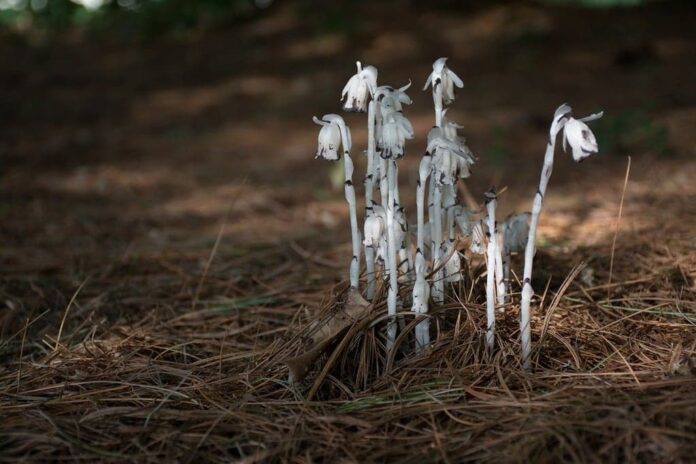As kids, we learn that plants need chlorophyll to survive and do so by photosynthesis. Little did we know that there are also non-photosynthetic plants out there that can live without the sun. Some plants steal energy from others while some other plants have different methods such as mycorrhizae and heteromycotroph. So feel free to take a look at some of the interesting non-photosynthetic plants with us below. Let’s see which one that you think is the most fascinating among the 10.
1Beechdrops
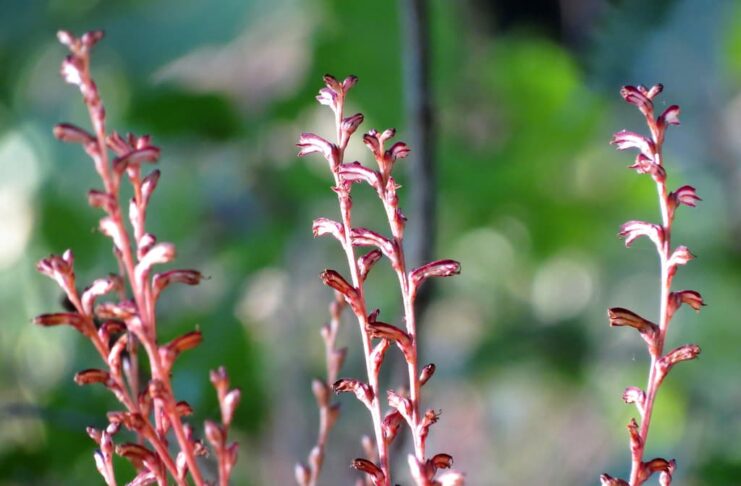
Having neither chlorophyll nor leaves, this is a holoparasitic plant that lives off of beech trees. What you see above the ground is just the flowering part of the plant. Between August and October, beechdrops produces 2 different types of small purplish flowers: self-pollinated flowers and cross-pollinated flowers. These flowers bloom in late summer and autumn, and they brown and die in late autumn. In order to avoid exhausting its food supply in the cold weather, it becomes dormant with its host beech tree. Deep down, beechdrops lives by connecting their haustoria to the roots of the beech below ground in winter. It uses the small root-like structures to insert into the beech root to draw out enough nutrition to sustain itself. Although it is a parasitic plant, it does not damage its host at all since it is short-lived.
2Bird’s Nest Orchid
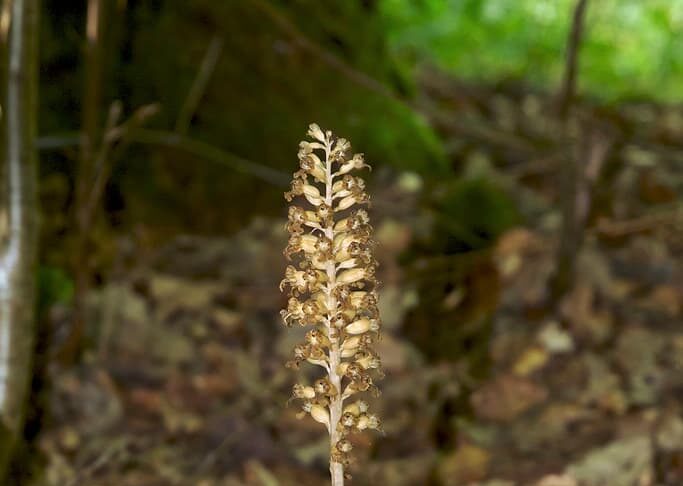
There are several orchid flowers that are actually non-photosynthetic, and this is one of them. This plant is native to Europe and North Africa, and it obtains food from decaying organic material. In fact, it is one of three British orchids that have no green leaves. Because it lacks chlorophyll entirely, it is unable to photosynthesize. Bird’s nest orchid depends completely on the help of a mycorrhizae fungus in the soil for nutrients to germinate and grow. Instead, it grows as a parasite on tree roots; hence the sickly look of its brownish-yellow flowers.
3Broomrape
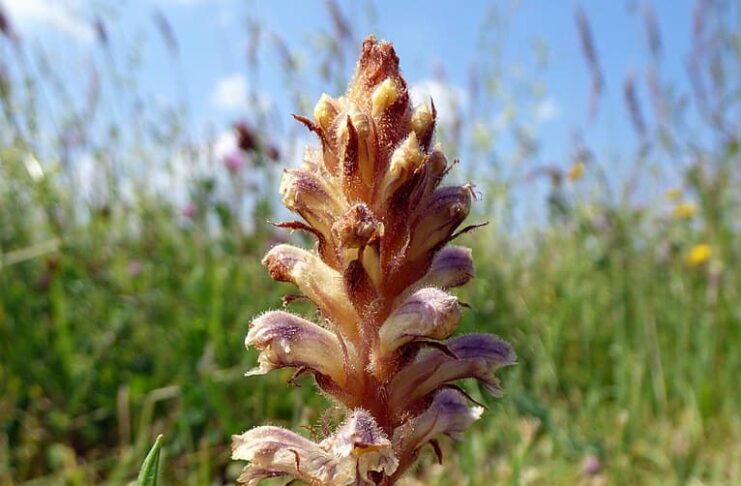
Orobanche minor aka broomrape is a perennial herb that produces little to no chlorophyll. As one of the non-photosynthetic plants, it draws nourishment from the roots of other plants instead. Broomrape does so by using small suckers known as haustoria to transfer the nutrients from the host to itself. There are approximately 150 species of broomrape, and a number of them are serious agricultural threats. For example, branched broomrape aka hemp broomrape is a pestilent plant that affects crops around the world. This parasitic non-photosynthetic plant can cause a significant loss of vegetable crops, especially tomatoes. In worst cases, it can heavily infest the fields which lead to quarantine to prevent further spread.
4Dodder
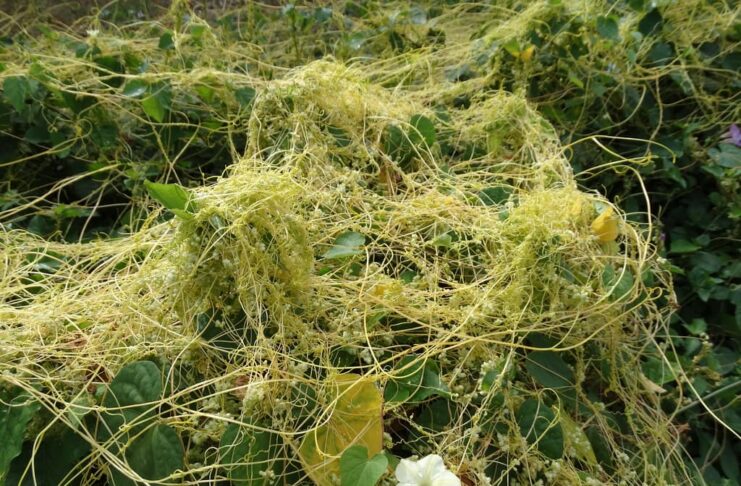
Dodder is a leafless and twining parasitic plant that is widely distributed throughout temperate and tropical regions around the world. Just like other non-photosynthetic plants, it absorbs nutrients by using haustoria to penetrate the tissue of its host plant. This obligate parasitic plant is so harmful that does not only live off of other plants but also kills them. It begins when its seed germinates, forming an anchoring root that sends up a slender stem until it reaches a host plant. Then, it twines around the stem of the host and throws its haustoria to penetrate it. Dodder lives by drawing nutrients and water, and it keeps growing and twining densely on the host. It can cause a lot of damages, and the only to get rid of dodder is by hand removing them from the field.
5Lathraea
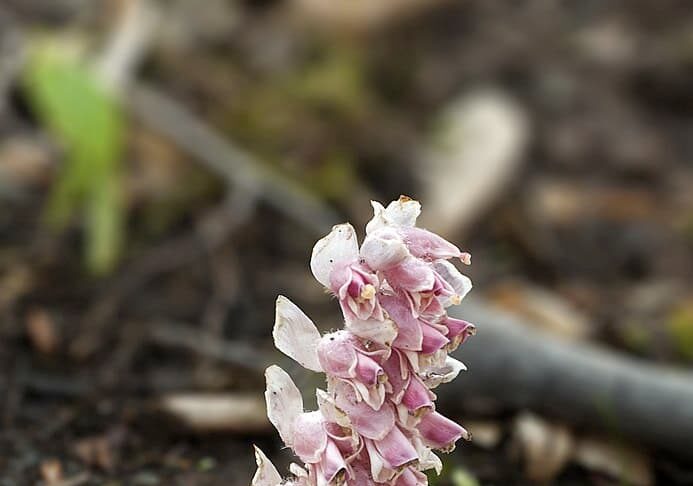
This non-photosynthetic plant is native to the temperate regions of Britain, Central Asia, Europe, and Ireland. Looking interesting and nice, lathraea or toothwort is also a parasitic plant that lives on the roots of woody plants. It is completely lacking chlorophyll, and this protocarnivorous plant entirely depends on the hosts for nutrients. Toothwort usually parasitizes plants such as alder, ash, beech, elm, hazel, and a wide range of other woody plants. Normally, it remains underground for most of the year since it can obtain essential nutrients by attaching haustoria to the host’s root. Despite being a parasitic plant, people sometimes grow some of them as ornamental. The most common one is purple toothwort because of its beautiful flowers.
6Indian Pipe
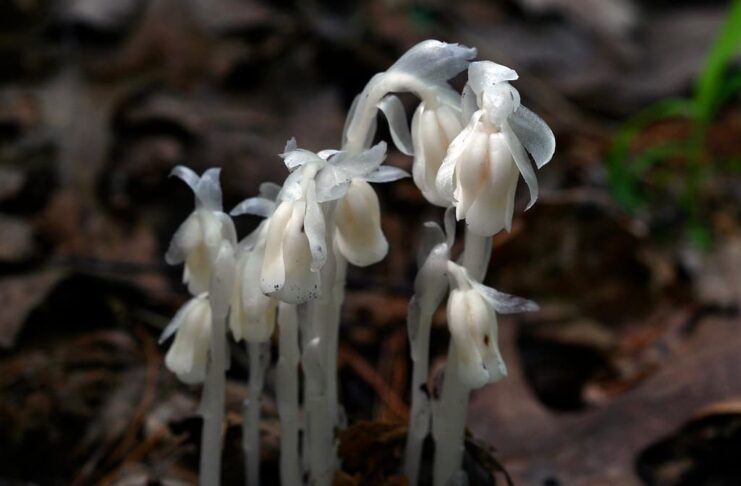
Also goes by the name of corpse plant or ghost plant, Indian pipe is a holoparasitic plant that has no chlorophyll. Because it lacks color, it has a corpulent white and waxy appearance with tiny scale-like leaves without pigmentation. Being a mycoheterotrophic plant, it lives in close association with a fungus that it acquires most of its nutrients from. As for the fungus, it lives in association with nearby beeches and other trees while most of the energy goes to the Indian pipe. With enough food, the plant is pinkish or white in color and it turns black if it dries out. Since this plant does not depend on photosynthesis, it is able to grow even in the darkest parts of forests.
7Mistletoe
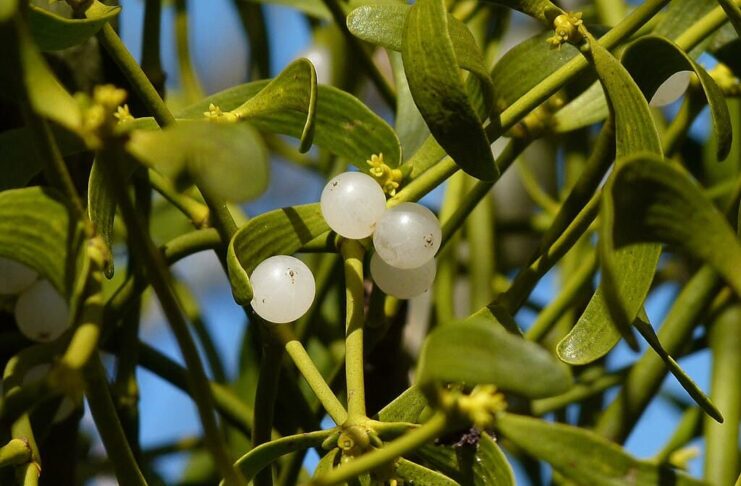
Mistletoe is one of the plants that many of us are familiar with, but maybe we don’t know that they are non-photosynthetic plants. This hemiparasitic plant attaches itself to their host shrub or tree by using haustoria to extract nutrients and water from them. Many mistletoe species grow on a wide range of host trees, and some may cause side effects on those trees. Those include infested outer branches, reduced growth, or stunting, and heavy infestation may also kill the host plant. This is why people often consider mistletoes as pests that devalue natural habitats and kill trees. However, some of them can help in the ecology by being food for many animals in the wild. Back in the old days, people even used them to treat arthritis, epilepsy, high blood pressure, and infertility.
8Pinesap
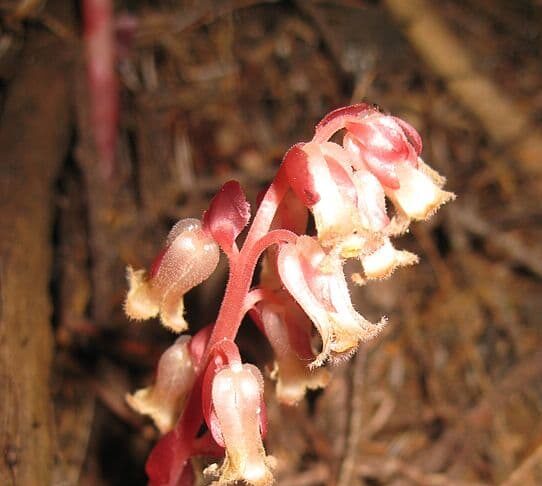
While most non-photosynthetic plants have dull colors, this one is different. It is a flowering plant with red color while some early forms are yellow which looks quite beautiful. At the same time, it also has a sweet fragrance from February to April with faded rose color. When September comes, the flowers are lavender and odorless until October. Pinesap is a perennial herb that lacks chlorophyll so it indirectly receives food from fungi rather than photosynthesis. Because it cannot make its own food, it relies completely on other organisms for nutrients through the host’s roots. Pinesap grows in chestnut oak-dominated forests or mixed pine-hardwood with dry acidic soil. People often find them with blueberry, mountain laurel, and rhododendron.
9Squawroot
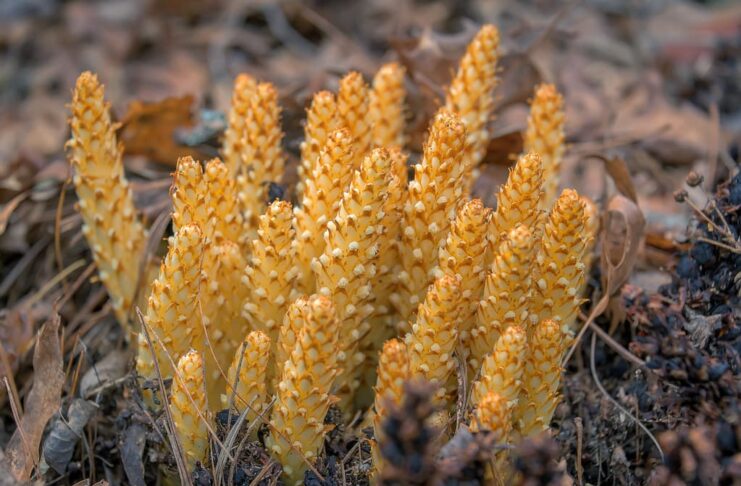
Squawroot is a non-photosynthetic plant that depends on a parasitic connection to the roots of the host trees for nourishment. Most of the hosts that this plant attaches itself to are mostly species of beech and oak in its area. The interesting thing about squawroot is that most of its biomass is found underground, and it is common in old forests. You can also tell that a forest is old when there are many squawroots in the area.
More than that, its seedlings grow underground for around 4 years. During those times, the roots attach to the roots of the host tree which forms large swollen knobs. Meanwhile, the above-ground part is flowering and it looks like a pine corn or corn cob that rises out of the dead leaves. Despite being a parasitic plant, squawroot actually offers some benefits. Many mammals consume its seeds and stalks, and it can be consumed as folk medicine or folk as well.
10Striped Coralroot Orchid
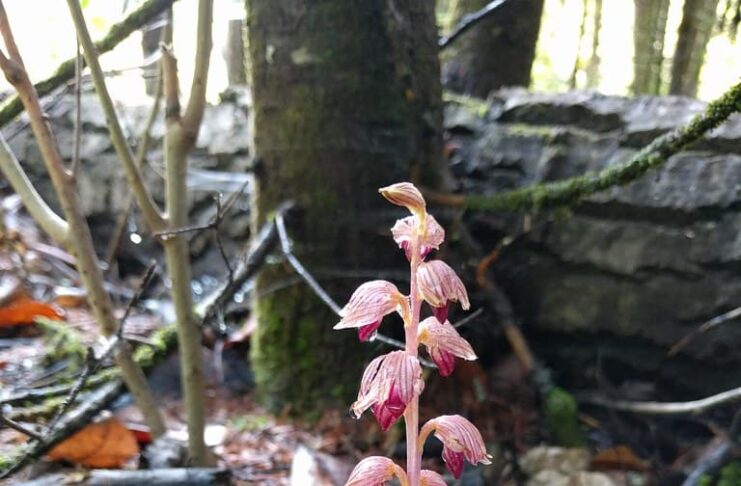
Striped coralroot orchids are mycoheterotrophic so they primarily obtain their nutrients through mycorrhizal fungi instead of photosynthesis. To survive, they obtain minerals, nutrients, and water that they need by parasitizing a mycorrhizal fungus that absorbs those for them. This plant starts flowering in the spring or summer, and it produces up to 35 red to yellowish-pink flowers. Striped coralroot orchids grow in forests and woodlands as well as lake shores where they form large patches. The good thing about them is that these parasitic plants provide nectar for many species of pollinating insects in the forests.
Related Post: Passive Pyrophytes Tree That Are Fire-Resistant

